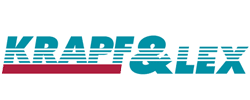2015
Delivery reliability stabilizes at 95%. In the medium term, Krapf & Lex wants to deliver 98% of its deliveries on schedule.
2014
After much effort and many internal improvement measures, the delivery reliability of Krapf & Lex reaches the value of 93% for the first time.
2013
With the turn of the year 2013/14, the final assembly will be relocated from Weiden to Roding. This means that the entire production is now in one location. With the relocation of construction, purchasing, accounting and sales to the new office building in Stresemann 13, the long-term future of the Weiden site is confirmed.
2010
Krapf & Lex Verkehrstechnik presents a variety of innovations at the InnoTrans fair 2010.
2006
Mr. Lex arranges his succession at Krapf & Lex Verkehrstechnik, transition of the company to Silvia and Martin Schulz.
1995
Krapf & Lex wins the announcement of the German Railways for a pressure protection system. Most of the ICE (German high-speed train) generations and also the Transrapid (German high-speed magnetic train) are equiped with pressure protection systems of Krapf & Lex.
1993
Due to the increase in the field of ventilation grilles the division to Krapf & Lex Verkehrstechnik and Krapf & Lex Oberflächentechnik takes place.
1991
Building of a modern administration building.
In the following years expansion of production areas in Weiden.
1972
Transfer of company leadership to son Dipl.-Ing. Ernst Lex
Expansion of the production area in Weiden in the following years.
1963
Building of the production hall in Roding.
1953
Moving to the present company premises in Weiden. After the sudden death of Ernst Krapf in October 1955, Eduard Lex gains 100% of the company shares.
In the following years extension of the production range by ventilation grilles for railway vehicles and pressure tanks for sand blasting plants.
1951
Construction of the first free blasting plant for the German National Railways.
1949
Company foundation by Mr. Ernst Krapf and Mr. Eduard Lex.







